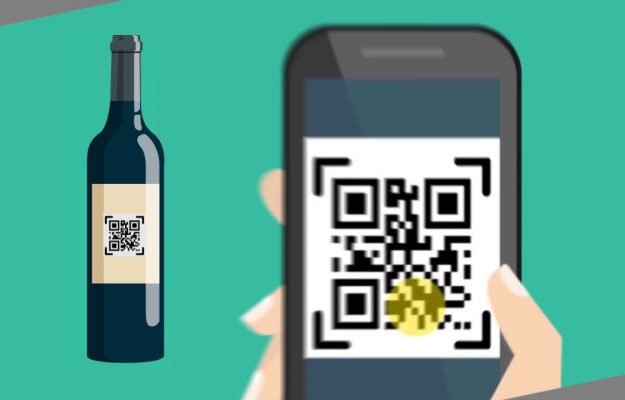For many years, wine and all other alcohol produced in the European Union has been exempt from indicating nutritional values and ingredients on the label. However, this situation is now going to be changing starting from the end of 2022, the date that the European Commission decided back in 2017, and therefore wine producers will also have to indicate the list of ingredients and the nutritional values on the back label. This innovation has risked turning into a bloodbath, in strictly practical terms, of course, for wine companies. They saw the specter of a kilometers-long as well as illegible back label materializing, translated into the language of each European Union country to which they export their bottles of wine. Then, fortunately, during the discussion on the new CAP (Common Agricultural Policy), the Italian proposal that the UIV (Italian Wines Union) introduced, took hold. The proposal is to insert the ingredients (quantity of fats, saturated fatty acids, carbohydrates, sugars, proteins and salt), alongside other information, in an electronic label, which can be accessed through a QR Code, and yes, on the label. This solution has pulled the sector out from the impasse, while the nutritional declaration may be limited to the indication of the energy value on the label, expressed using the “E” symbol for energy.
WineNews interviewed Paolo Castelletti, General Secretary of the Unione Italiana Vini (UIV), and Sandro Sartor, at the helm of the Ruffino brand and vice president of the Unione Italiana Vini (UIV), about the innovation. “Wines and alcoholic beverages having more than 1.2 alcohol degrees”, said Paolo Castelletti, “were exempt from indicating both ingredients as well as nutritional values. This exemption, however, terminated in 2017, on commitment of the European Union Commission, and since 2018, as a sector, we have been trying to find solutions to the problem. We needed to reconcile the need for correct information to the consumer on the one hand, while on the other, avoid the label becoming a sort of leaflet that nobody would read, and therefore it would not be useful. The wine label already contains a multitude of mandatory elements, and it risked turning into something non usable”.
In the end, “the compromise identified in the trilogue in June satisfied us, because essentially, two goals have been reached”, continued Castelletti. “One of the goals is that by the end of 2022, it will be mandatory to indicate the nutritional values on the label of alcoholic beverages, probably through a pictogram, in order to avoid the issue of translations, since many different languages are spoken in the Common Market. The other goal is indicating the ingredients on the label, through a QR Code, which will be on a platform, where the consumer will find all the information relating to the wine he/she is drinking and any external ingredients used to produce it. There is also a third indication, namely health warnings, on which there is still no precise definition regarding, for instance, prohibiting pregnant women from drinking alcoholic beverages, as well as new drivers or for those who drive. We still have to decide”, explained UIV Secretary General Paolo Castelletti, “whether they will go on the label or off the label”.
At the legislative level, “all of this, through the amendment to the CAP regulation, must include the amendment of the current article 119, which governs labeling of wines. Furthermore, this step would make it possible to maintain a specific condition for wine, which would remain outside the horizontal legislation for labeling. Ours would be the first sector to have its own specific vertical legislation, which would also regulate the elements related to the nutritional claim, the list of ingredients and health warnings”. As far as timing and methods are concerned, “in mid 2022 legislative acts will validate this agreement. In the meantime, as a sector and as CEEV - Comité Vins, we have created a platform in which consumers, for those companies that have decided to anticipate the end of 2022 date, can already find the data. We are still in the experimental phase, however, but we believe that in September the platform should be ready to be used by consumers for the companies that have agreed to act as guinea pigs, and therefore to put the data off label. It is a European platform, so it is also very important to prevent each country from proceeding in random order”, concluded Paolo Castelletti, general secretary of the Italian Wines Union (UIV).
Sandro Sartor said that “if this QR Code had not been found, the alternative scenario would have been that when the exemption to not register the ingredients on the label for alcoholic beverages produced in the European Union terminated, wine labels would have had to put not only everything, but in each country in a different language, from Denmark to Sweden to France to Germany. The electronic label, on the other hand, allows us to keep the single European back label, with the QR Code which, when opened, reveals the information required by law in every country and in every language. And perhaps, since there is much more space, the information can be much more detailed: this has literally saved the single European label”. At any rate, the layout of the “back label still needs to be changed, because it must register nutritional values, and therefore the calories in a 100 ml glass of wine”, continued Sandro Sartor. “The idea is to use a single pictogram that contains the number of calories, and is immediately understandable by anyone regardless of which language they speak. Obviously, this opportunity is being offered to wine producers, but if someone prefers to write everything on the back label rather than use the e-label, that is possible”.
Returning to the platform that will collect all the information on European wines, and its practical use, “the one that the Comité Vins, (the European equivalent of Unione Italiana Vini), has prepared and is testing, is a single platform for everyone, at a very accessible price. It will allow each producer to register, insert the data of the products they want to retro-label (including an image, and the ingredients, and the platform will guide the producers in implementing the information), insert the various pictograms, mandatory or optional, such as that of a pregnant woman or the ban for minors, deciding whether or not to use them as warnings. After inputting all this information, the system will produce the QR Code, which the wine producer will then consign to his copier to be inserted on the back label”, explained the vice president of the Italian Wines Union (UIV). “The platform is managed by the Comité Vins, but the person responsible for the information inserted on each wine is the producer, who is responsible for it. The system will then automatically translate the label into all languages. It is actually very simple and effective, and you can also add the link of the company website, therefore it becomes a marketing tool. The cost is absolutely affordable, especially since the information must be inserted in a format that is the same for everyone, and it cannot appear on the company website, because it would be confused with advertising information. The two kinds of information must be absolutely independent, so the alternative is building one’s own platform”, added Sandro Sartor.
Although it may seem superfluous, we must remember that this innovation, “does not concern non-EU markets, where nothing will change, and where the rules will continue to be followed, and there will be no differences compared to what has happened so far. This is a result brought home by the Italian wine world, which has done a great job of proactive lobbying to the European Union Commission, the outcome of which many were skeptical. We have been visionaries and stubborn, too. The CAP (Common Agricultural Policy) is not yet law, but this chapter has actually been discussed and approved by a large majority of the members of the Commission, so it will certainly go forward”, concluded Sandro Sartor, CEO of Ruffino.
Copyright © 2000/2025
Contatti: info@winenews.it
Seguici anche su Twitter: @WineNewsIt
Seguici anche su Facebook: @winenewsit
Questo articolo è tratto dall'archivio di WineNews - Tutti i diritti riservati - Copyright © 2000/2025









































































































































































































